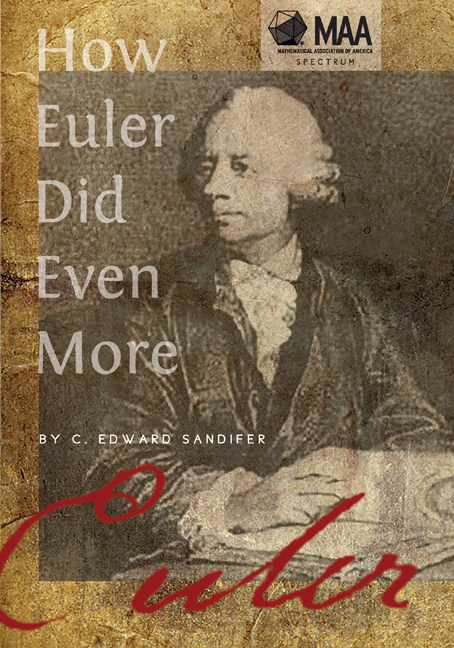Book contents
- Frontmatter
- Contents
- Preface
- Part I Geometry
- Part II Number Theory
- Part III Combinatorics
- Part IV Analysis
- Part V Applied Mathematics
- Part VI Euleriana
- 31 Euler and the Hollow Earth: Fact or Fiction? (April 2007)
- 32 Fallible Euler (February 2008)
- 33 Euler and the Pirates (April 2009)
- 34 Euler as a Teacher – Part 1 (January 2010)
- 35 Euler as a Teacher – Part 2 (February 2010)
- About the Author
31 - Euler and the Hollow Earth: Fact or Fiction? (April 2007)
from Part VI - Euleriana
- Frontmatter
- Contents
- Preface
- Part I Geometry
- Part II Number Theory
- Part III Combinatorics
- Part IV Analysis
- Part V Applied Mathematics
- Part VI Euleriana
- 31 Euler and the Hollow Earth: Fact or Fiction? (April 2007)
- 32 Fallible Euler (February 2008)
- 33 Euler and the Pirates (April 2009)
- 34 Euler as a Teacher – Part 1 (January 2010)
- 35 Euler as a Teacher – Part 2 (February 2010)
- About the Author
Summary
Is the earth hollow? Is there a sun 600 miles in diameter at the center of the hollow earth? Is the inside of the shell of the hollow earth covered with mountains larger than the ones we see on the outside? Is there a hole in the shell of the hollow earth through which flying saucers from Venus and space ships from other galaxies fly to get to their bases inside the hollow earth? Are there secret passages from the bases of the Great Pyramid and other locations around the earth that connect the outside to the inside of the earth? Is the mushroom cloud of an atomic bomb really caused when the bomb pokes a hole through the shell and the gasses inside the earth rush through to escape?
Some people claim to believe all of this, and they even give us detailed maps of what is inside the earth. See, for example, the extravagant map above, drawn by Max Fyfield and available on scores of pages on the web. [Fy] Imagine my surprise when I found apparently reputable sources that said that Euler also endorsed a hollow earth theory, and that Fyfield's map was based on Euler's theories. This, of course, piqued my curiosity, so I decided to look into the question of Euler and the Hollow Earth.
Here are a few excerpts from some websites I found that credit Euler with a hollow earth theory.
Leonhard Euler
Later theorists came up with variations to Halley's [sic] model. In the 17th century, Leonhard Euler proposed a single-shell hollow Earth with a small sun (1.000 km across) at the centre, providing light and warmth for an inner-Earth civilisation. Others proposed two inner suns, and even named them: Pluto and Proserpine.
http://strangemaps.wordpress.com/2007/03/01/85-inside-the-hollow-earth/
Leonhard Euler
In the 18th century Swiss mathematician Leonhard Euler took the multiple spheres theory and replaced it with a single hollow sphere that contained a sun 600 miles wide. He said the sun maintained heat and light for an advanced civilization that he said lived there.
Information
- Type
- Chapter
- Information
- How Euler Did Even More , pp. 209 - 214Publisher: Mathematical Association of AmericaPrint publication year: 2014
